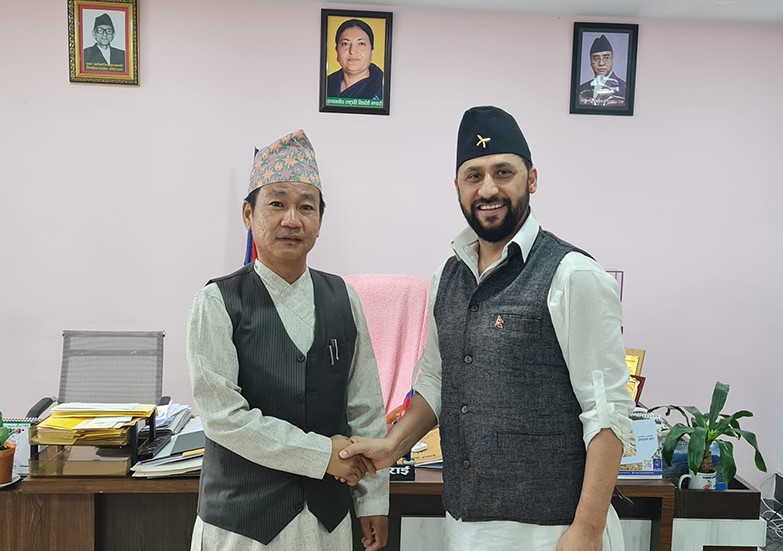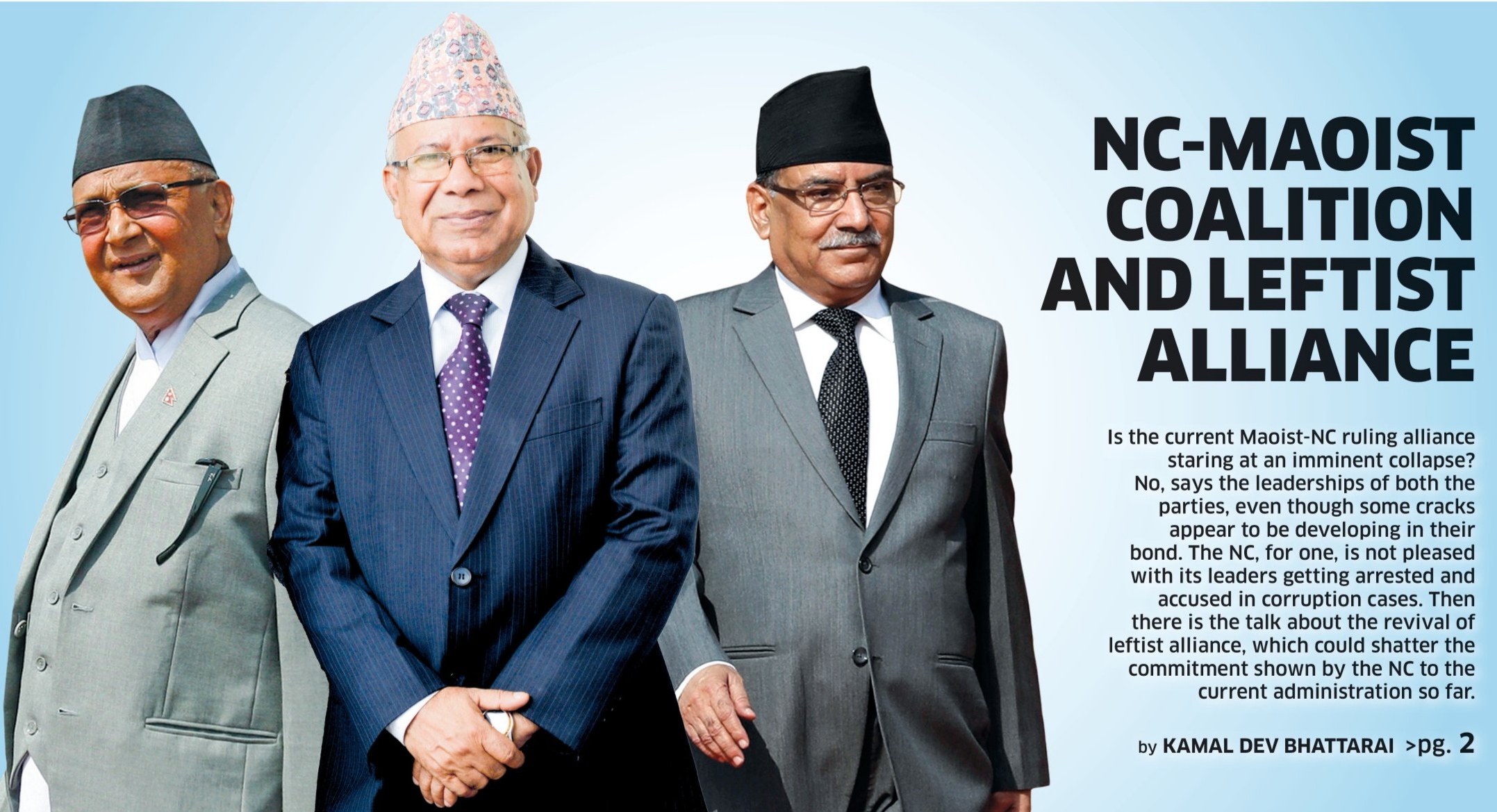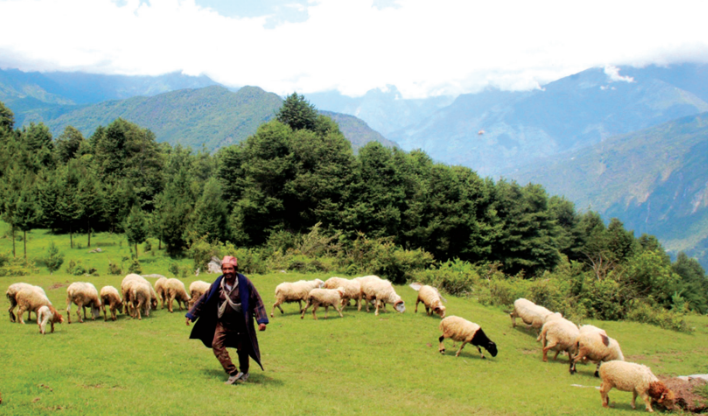‘Delhi Crime’ Season 2 review: Brutal, violent, and gripping
Shefali Shah was only 32 when she played Akshay Kumar’s mother in the 2005 movie Waqt. He was 37. She has also played mother to Priyanka Chopra and Ranveer Singh, both of whom are younger than her by a few years. Bollywood is ageist, specifically to women. And had it not been for a new wave of filmmakers and trend-breaking OTT productions, we probably wouldn’t have gotten to see what a good actor Shah is. The actor is back in her role as Vartika Chaturvedi, DCP of the Delhi police force in the Season 2 of ‘Delhi Crime’. While Chaturvedi solved the Nirbhaya rape case in the first season, which also became the first Indian show to win an International Emmy award for Outstanding Drama Series, DCP Vartika now has her hands full with a series of brutal murders. Elderly people living in the posh areas of Delhi are being robbed and murdered in their homes. A notorious gang has been going around bashing people’s heads in with hammers. Their modus operandi matches the infamous kachcha-baniyan gang which existed decades ago. The people from the original gang belonged to a certain tribe that has been associated with burglaries and similar crimes in India for centuries. Dressed in undergarments and covered in oil to make themselves slippery, the new kachcha-baniyan gang spreads terror among Delhi pensioners and their families. Now it’s up to Vartika and her team of police officers to find the culprits. But it was never going to be an easy task. The criminals this time are sharp minded and know how to evade the police. The police, on the other hand, have no clue as to where to begin their investigation and end up making a few blunders. This hide and seek between the police and the criminals makes up for the five episodes of the series. What I liked most about the second season of Delhi Crime is that it has the same intensity even after three years since it first released. Although Tanuj Chopra takes over the directorial reign from Richie Mehta for Season 2, there is not much difference in the execution. And I mean this as a compliment for Chopra since Mehta had left the audience with high expectations. The filmmakers have done solid research for the story. It shows as the script has incorporated caste system in India with utmost sensitivity so as not to hurt any sentiments. The cast of Delhi Crime elevate the story, screenplay and production. Shah as DCP Vartika proves once again why female-centric characters are necessary in Indian cinema to change the audience and the filmmakers’ perspectives. Her character—who is in a powerful position—does not display unnecessary heroism and masochism we would have most likely witnessed had it been played by a male actor. Actors Rasika Dugal (as Neeti Singh) and Rajesh Tailang (Bhupendra Singh), who are police officers in Vartika’s team, have also done justice to their respective roles. Both of their characters are struggling to keep their professional and personal lives in balance and each has their own way to deal with them. Despite the fast-paced screenplay and focus on crime, the audience get to see glimpses of their personal lives. These side stories make the central plot even more interesting. It’s a clever ploy by the writers and equally smart execution by the actors. At the risk of giving away spoilers, I have to mention Tillotama Shome whose performance is one of the highlights of the series. The actor has always given good performances but in Delhi Crime she takes another step in making herself a household name. What I liked most about Delhi Crime is that it gives its female characters ample opportunities to showcase their talents. Who should watch it? If you have not watched Delhi Crime Season 1 yet, I suggest you watch that first just to get introduced to the characters. But even as a standalone series, Delhi Crime Season 2 is gritty, violent and gripping. If gruesome, edge-of-the-seat stories are your thing, don’t miss this one. Rating: 4 Genre: Crime, thriller Actors: Shefali Shah, Rasika Dugal, Tillotama Shome Director: Tanuj Chopra Run time: Five hours (approx.)
Buddhi Narayan Shrestha: The man who gave us new map of Nepal
Quick facts
Born on 1 May 1941 in Okhaldhunga
Went to Vanasthali Vidyashram, Kathmandu
Graduated from Tri Chandra College and post-grad from Tribhuvan University, Kathmandu
Started government job at the Department of Survey in 1965
Husband of Lily Shrestha
Father to Anu Shrestha, Muna Shrestha, Archana Shrestha and Kanchana Shrestha
 From an early age, I was interested to know about different countries and their attractions. I used to read about those countries and visualize what they looked like. Perhaps, that’s what got me into majoring in geography.
I was born and raised in Okhaldhunga. I came to Kathmandu after completing my eighth grade in my village; it was a nine days’ walk.
I got my IA, BA and MA degrees from Tribhuvan University and a land survey diploma course from West Bengal Survey Institute, Calcutta. I also took a course on land use planning from the University of Guelph, Canada.
My land surveying background got me a job in the Survey Department of Nepal in 1965. I worked there for 26 years and retired after completing a five-year tenure as the department’s director general.
While working in the department, I got the opportunity to participate in national and international training. These trainings taught me a lot about geography and international boundaries. Because of my knowledge and expertise, I was given the opportunity to lead the government delegation of the Nepal-India Joint Technical Level Boundary Committee and Nepal-China Boundary Committee several times to resolve the inter-country border issues.
After my retirement, I established Bhumichitra Mapping Company with my colleagues from the Survey Department. The company works as a private consultant for land-related works.
In 1995, I wrote an article for the Kantipur daily titled ‘Jange Khambako Darja’. It was about India’s encroachment of a border pillar between Nepal and India in Jhapa district. After the piece was published, many readers asked me to continue such writings. I then started writing on border issues regularly. My writing journey also pushed me into conducting my own research on borders.
My first book ‘Nepalko Simana’ was on my experience during the border dispute negotiations with India and China. It won the Madan Puraskar in 2001. This recognition encouraged me to write more. I have written 14 books to date.
My second book ‘Border Management of Nepal’ was published in 2003, and it featured for the first time the ‘Chuche Naksa’ (Nepal’s map including the disputed regions in the North West). I wrote the book in English so that the international community can read it and know the reality.
Soon after I published the book, many scholars, politicians, ministers and lawmakers asked me for a copy of the map.
As a border analyst, I established the statistical data of India-encroached territory of Lipulekh-Kalapani-Limpiyadhura 372 sq km, Susta 145 sq km and 89 sq km in other 69 places, being a total of 606 sq km.
[caption id="attachment_30782" align="alignnone" width="1024"]
From an early age, I was interested to know about different countries and their attractions. I used to read about those countries and visualize what they looked like. Perhaps, that’s what got me into majoring in geography.
I was born and raised in Okhaldhunga. I came to Kathmandu after completing my eighth grade in my village; it was a nine days’ walk.
I got my IA, BA and MA degrees from Tribhuvan University and a land survey diploma course from West Bengal Survey Institute, Calcutta. I also took a course on land use planning from the University of Guelph, Canada.
My land surveying background got me a job in the Survey Department of Nepal in 1965. I worked there for 26 years and retired after completing a five-year tenure as the department’s director general.
While working in the department, I got the opportunity to participate in national and international training. These trainings taught me a lot about geography and international boundaries. Because of my knowledge and expertise, I was given the opportunity to lead the government delegation of the Nepal-India Joint Technical Level Boundary Committee and Nepal-China Boundary Committee several times to resolve the inter-country border issues.
After my retirement, I established Bhumichitra Mapping Company with my colleagues from the Survey Department. The company works as a private consultant for land-related works.
In 1995, I wrote an article for the Kantipur daily titled ‘Jange Khambako Darja’. It was about India’s encroachment of a border pillar between Nepal and India in Jhapa district. After the piece was published, many readers asked me to continue such writings. I then started writing on border issues regularly. My writing journey also pushed me into conducting my own research on borders.
My first book ‘Nepalko Simana’ was on my experience during the border dispute negotiations with India and China. It won the Madan Puraskar in 2001. This recognition encouraged me to write more. I have written 14 books to date.
My second book ‘Border Management of Nepal’ was published in 2003, and it featured for the first time the ‘Chuche Naksa’ (Nepal’s map including the disputed regions in the North West). I wrote the book in English so that the international community can read it and know the reality.
Soon after I published the book, many scholars, politicians, ministers and lawmakers asked me for a copy of the map.
As a border analyst, I established the statistical data of India-encroached territory of Lipulekh-Kalapani-Limpiyadhura 372 sq km, Susta 145 sq km and 89 sq km in other 69 places, being a total of 606 sq km.
[caption id="attachment_30782" align="alignnone" width="1024"]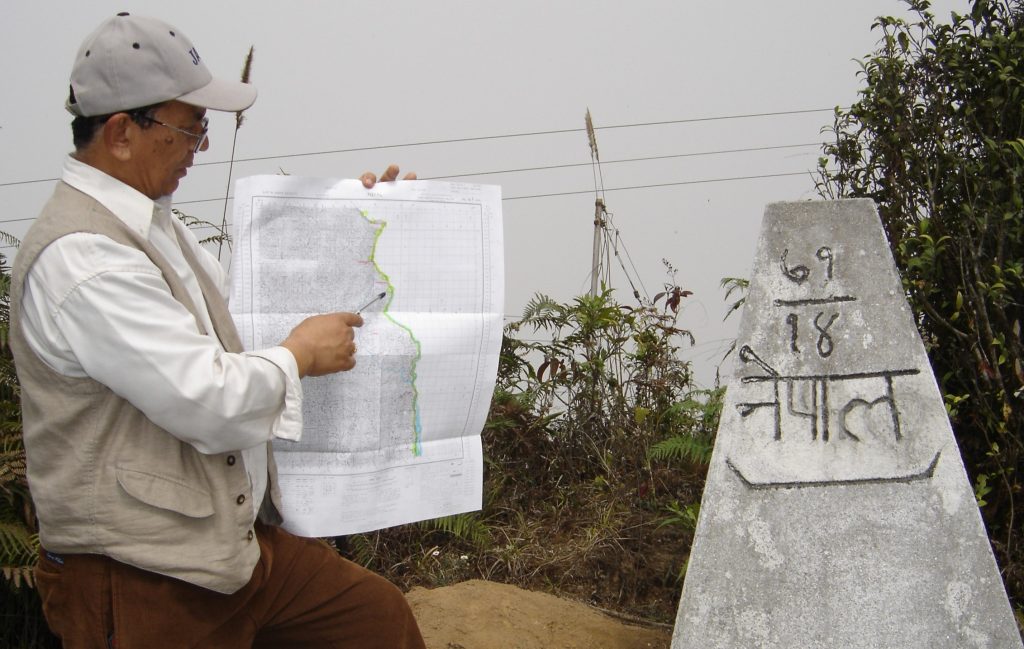 Buddhi Narayan Shrestha verifying the border pillar number 71/14 at Manebhanjyang, Illam | Photo: Manoj Pandit[/caption]
This map was the basis for the endorsement of the new official map of Nepal by the KP Oli-led government in 2022.
I scoured through many libraries around the world, including the ones in London and New York. At the Library of Congress in New York, I discovered that the origin of the Mahakali River was Limpiyadhura, not Lipulekh.
When India published its official map including Nepali territory in 2019, I joined protests from the US. I spoke outside the White House in Washington and the UN building in New York. I explained to the protest attendees how India started encroaching on Nepali land from 1962. We even met David Hunter, representative of UN Secretary-General Antonio Guterres and handed over a memorandum of request to free the Nepali territory from Indian occupation.
My campaign to reclaim Nepali territory did not start in 2019, though. I have been urging almost every government and prime minister since 1999 to do something about the border issue.
The then prime minister Krishna Prasad Bhattarai and his government was the only leader who actually showed some concern. Bhattarai even issued a directive to form a committee to investigate the border issues, but he was soon out of the government.
I have also inspected various spots on the boundary verifying map for the documentary film ‘Greater Nepal—In Quest of Boundaries’ directed by Manoj Pandit. One of my books ‘International Boundaries of Nepal’ is published in Latvia, Europe, and is translated into eight languages (Russian, German, French, Dutch, Italian, Spanish, Portuguese, and Polish).
Besides, I have also worked as a board member of the Institute of Foreign Affairs (IFA), Ministry of Foreign Affairs from 2012 to 2016. I was the member secretary of the City Planning Commission (CPC) at Kathmandu Metropolitan City for a year in 2003. I have also collaborated with the International Boundaries Research Unit (IBRU), UK; Association for Borderland Studies, US; South Asian Studies Association of Australia; and Transparency International Nepal, among others.
Even in India, I have attended many border-related conferences. Command and Staff Colleges of the Nepal Army, Armed Police Force, and Nepal Police often invite me as a guest lecturer. I have always believed that border issues with neighboring countries should be resolved through dialogue based on historical maps and related documents.
Lately, I have been engaged in research, study, publications, presentations, and discussions on the boundary of Nepal, border management, and border-related issues in Nepal. I do not just find the problems related to boundaries, but also try to find solutions and suggest the government. I am determined to contribute to protecting the national boundary and preventing territorial encroachment from neighboring countries. We need to create awareness for national integrity, security, and solidarity through border research.
Buddhi Narayan Shrestha verifying the border pillar number 71/14 at Manebhanjyang, Illam | Photo: Manoj Pandit[/caption]
This map was the basis for the endorsement of the new official map of Nepal by the KP Oli-led government in 2022.
I scoured through many libraries around the world, including the ones in London and New York. At the Library of Congress in New York, I discovered that the origin of the Mahakali River was Limpiyadhura, not Lipulekh.
When India published its official map including Nepali territory in 2019, I joined protests from the US. I spoke outside the White House in Washington and the UN building in New York. I explained to the protest attendees how India started encroaching on Nepali land from 1962. We even met David Hunter, representative of UN Secretary-General Antonio Guterres and handed over a memorandum of request to free the Nepali territory from Indian occupation.
My campaign to reclaim Nepali territory did not start in 2019, though. I have been urging almost every government and prime minister since 1999 to do something about the border issue.
The then prime minister Krishna Prasad Bhattarai and his government was the only leader who actually showed some concern. Bhattarai even issued a directive to form a committee to investigate the border issues, but he was soon out of the government.
I have also inspected various spots on the boundary verifying map for the documentary film ‘Greater Nepal—In Quest of Boundaries’ directed by Manoj Pandit. One of my books ‘International Boundaries of Nepal’ is published in Latvia, Europe, and is translated into eight languages (Russian, German, French, Dutch, Italian, Spanish, Portuguese, and Polish).
Besides, I have also worked as a board member of the Institute of Foreign Affairs (IFA), Ministry of Foreign Affairs from 2012 to 2016. I was the member secretary of the City Planning Commission (CPC) at Kathmandu Metropolitan City for a year in 2003. I have also collaborated with the International Boundaries Research Unit (IBRU), UK; Association for Borderland Studies, US; South Asian Studies Association of Australia; and Transparency International Nepal, among others.
Even in India, I have attended many border-related conferences. Command and Staff Colleges of the Nepal Army, Armed Police Force, and Nepal Police often invite me as a guest lecturer. I have always believed that border issues with neighboring countries should be resolved through dialogue based on historical maps and related documents.
Lately, I have been engaged in research, study, publications, presentations, and discussions on the boundary of Nepal, border management, and border-related issues in Nepal. I do not just find the problems related to boundaries, but also try to find solutions and suggest the government. I am determined to contribute to protecting the national boundary and preventing territorial encroachment from neighboring countries. We need to create awareness for national integrity, security, and solidarity through border research.
 About him
Lily Shrestha (Wife)
About him
Lily Shrestha (Wife)
 My husband cares a little about his personal life because for him, this country and its people are his home and family. He has dedicated his life to border study and research. Together, we have visited Nepal-India border areas many times and I have seen him work. His love and dedication for Nepal amaze me.
Lok Raj Baral (Friend)
My husband cares a little about his personal life because for him, this country and its people are his home and family. He has dedicated his life to border study and research. Together, we have visited Nepal-India border areas many times and I have seen him work. His love and dedication for Nepal amaze me.
Lok Raj Baral (Friend)
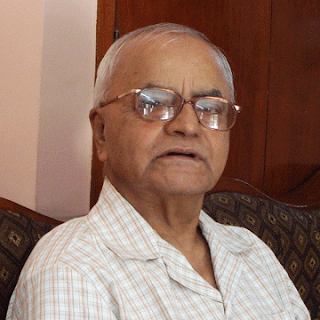 Buddhi Ji and I have been friends since 1959. We were classmates in our BA and MA. We have even shared a room for a couple of years. His research on borders has revealed many truths to the public. I have cited his findings in my books as well. But there are a few issues that we two do not agree on. I nevertheless admire his dedication and work.
Dhruba Hari Adhikari (Colleague)
Buddhi Ji and I have been friends since 1959. We were classmates in our BA and MA. We have even shared a room for a couple of years. His research on borders has revealed many truths to the public. I have cited his findings in my books as well. But there are a few issues that we two do not agree on. I nevertheless admire his dedication and work.
Dhruba Hari Adhikari (Colleague)
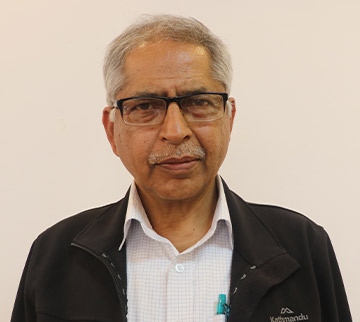 I have read most of his books and reviewed a few of them. As a border researcher, he has a broad knowledge on Nepal-India boundaries. Few of his findings have been opposed by some researchers, but he has consistently defended them. His works inspire and encourage others to study and research about national and international boundaries.
I have read most of his books and reviewed a few of them. As a border researcher, he has a broad knowledge on Nepal-India boundaries. Few of his findings have been opposed by some researchers, but he has consistently defended them. His works inspire and encourage others to study and research about national and international boundaries.
The new challengers
Call it ‘Balen effect’ or ‘Sampang effect,’ many young and educated people have declared their independent candidacies for the November elections, and the old-established parties feel unsettled. The groundswell of urban voters’ support to independent candidates in the May election has made parties realize they cannot risk fielding political stooges and placement in the upcoming polls.
Anthropologist Laya Prasad Uprety says the wave of independent candidacies in local and national elections is a sign that Nepali voters, mostly youths, are deeply disenchanted with the established political parties. “Since 1990, Nepali political parties have failed to work for the interest of people. And many of today’s young generation see these parties and their leaders as part of the problem,” says Uprety. “That is why we are seeing a rise in independent election candidates.” Political analyst Lok Raj Baral has a different thought regarding the rise in independent candidates.
He says there is a significant difference between local and federal elections. “Yes, the effects of Balen and Sampang’s victory in the local elections might sway some voters to pick independent candidates, but it cannot make that much of a difference to hurt the established parties.”
Full story here.
The super tramp: Shishir
Shishir and I'd turned in for the night in our tent on the pine-studded Mahesh Narayan hill. I'm a light sleeper; Shishir was sleeping like a log. A scratching sound suddenly awakened me; my mobile showed the time at 3 am. I listened with bated breath—nothing. Maybe I was mistaken; I curled into my sleeping bag and tried to go back to sleep. It sounded again, and I was sure it came from very close. My imagination ran riot—a leopard, perhaps? Hey, what do you know? It turned out to be an accursed rat as I trained my flashlight on it through the tent's mesh vent. The weather the next day at eight in the morning felt fresh, and the sweet-smelling pines cloaked in the thick fog had a revitalizing effect on me. “Good morning, the weather looks great,” I said. Shishir just smiled and busied himself with dismantling the tent. My eyes then fell on the flysheet that had collected a little dew water, almost half a liter; I hastened and spooned it into a bottle, confident we could drink it as we carried Aquatabs. As I checked for something to eat for breakfast, I saw Shishir holding a plastic bag and picking something up—turned-out trash strewn about the site. Not ours, though! Previous campers had littered the site. Soon, it looked spotless. None of us friends understood Shishir, who often relapsed into one of his eccentricities. A man of few words, he liked to call himself the Super Tramp. Like a friend said, nobody could fathom Shishir—only Shishir understood Shishir. Well said. The trash left by others was 10-times ours. But that did not bother Shishir. He did that every time he camped. "Great job," I called out to him. And as expected, he just smiled back. Soon, we were munching on last night's leftover khichadi—our breakfast. With the packing of our gear done and a last-minute check, we left for the Gupteswor Mahadev. On the way, Shishir stopped to click at something, which turned out, a fallen tree stump with a brace of wild mushrooms on top, looking like purple cabbage. I'd seen nothing like it. A thick fog enveloped us as we hit the singletrack across the tall pines, visibility 10 feet across but far better than the previous night. It was a brief ride to the Mahesh Narayan Shrine and took 20 minutes. The elevation commanded a view of fog-shrouded, lush northern hills. A three-foot-tall cave-like hollow enclave lodged the deity on the face of a sheer granite hill. There was no idol, only a jumble of vermillion-streaked rocks in odd sizes and shapes. A string of bells and a trident stood by their side; more bells hung by the roof. A little further, another opening gave an impression of a cave. Shishir crawled and wriggled through the narrow gap to investigate. I could see his derriere in the beam of my headlamp. I remained out because caves gave me the jitters. He managed some five ft. into the crack and looked around to see if it went any further. All this time, I just watched. He was out soon. Not a cave; maybe it was once, he said. Shishir then scouted around for the trail to Gupteswor Mahadev. He found none. The steep crude stone steps that led to the shrine had caved. A dang dogged guy, Shishir never gave up, easy. He knew the cave lay some 200 meters down. He nimbly stepped on fallen rocks like a mountain goat, dropped to the bottom, and disappeared into the heavy undergrowth. After 20 minutes, he was back, and my hunch proved correct. He had failed to track down the cave and the Gupteswor Mahadev shrine. After 200 meters, the trail under heavy cover vanished, he said; he could go no further, tried as he did to spare no effort. He was mighty surefooted about the place when we planned the trip, and he had been there two years back. So much for my friend Super Tramp's itching desire to explore the mysterious cave of Gupteswor Mahadev! [email protected]








